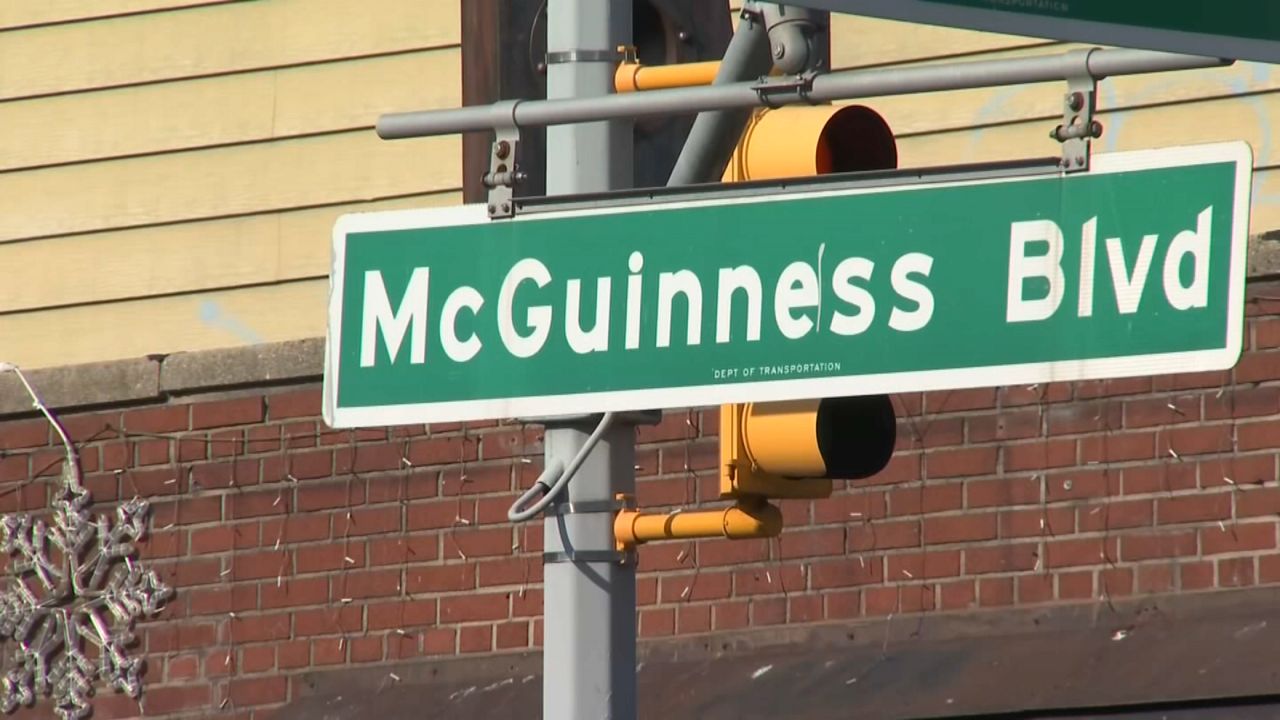Fear and frustration are mounting in Greenpoint, Brooklyn weeks after the city unveiled two new bike lanes along McGuinness Boulevard.
Phil Saad is a longtime business owner in Greenpoint, and his production equipment store, That Cat Camera Support, relies heavily on truck deliveries: as many as 40 deliveries per day.
What You Need To Know
- There have been three fatal accidents over the last decade on McGuinness Boulevard — a mile-long, four-lane roadway that stretches from the Brooklyn-Queens Expressway to the Pulaski Bridge
- In May, the city approved a plan that advocates were in favor of that would have cut four lanes of traffic down to two and added parking-protected bike lanes. But after pushback from local businesses, the Department of Transportation began work on the current plan
- The section south of Calyer Street is still supposed to get that original plan in the spring, cutting four lanes to two and adding parking-protected bike lanes
- The DOT said it will undergo more analysis during the winter months
“It’s raising the bar of tension between people and it’s creating animosities that I think are the result of bad decisions by the Department of Transportation and elected officials,” Saad said.
McGuinness Boulevard, a mile-long, four-lane roadway that stretches from the Brooklyn-Queens Expressway to the Pulaski Bridge, is known as a dangerous thoroughfare.
The city recently approved a plan that eliminated parking on both sides of the street and replaced them with bike lanes in each direction north of Calyer Street. From 7 a.m. to 7 p.m., motorists can use two lanes of traffic in each direction. Outside of those hours, one traffic lane becomes parking.
“From a strategic point of view, they just made it more dangerous, because they took that away and they added the most dangerous vehicle: bicycles and e-bikes,” said Saad.
For the last two years, the group Make McGuinness Safe has been advocating for a safer McGuinness Boulevard.
In May, the city approved a different plan that advocates were in favor of that would have cut four lanes of traffic down to two and added parking-protected bike lanes. But after pushback from local businesses, the Department of Transportation began work on the current plan.
“The plan that we’ve been advocating for has to be about safety, and that safety isn’t only about cyclists. It also needs to be safe for pedestrians and for vehicles, and the current configuration does not serve our community safely,” said Bronwyn Breitner, Make McGuinness Safe coordinator.
And to make matters more confusing, the reserved loading zones are gone, forcing truck drivers to double park in the newly minted bike lanes.
“There’s no loading zones for local businesses, and so a lot of the vehicles that you see parked in the bike lane are actually not sure what they’re supposed to do,” Breitner said.
Looking ahead, the section south of Calyer Street is still supposed to get that original plan in the spring, cutting four lanes to two and adding parking-protected bike lanes. But the DOT says it will undergo more analysis during the winter months.




_PKG_DOT_BQE_Improvements_CG_131225588_368)

_Grand_Army_Plaza_PKG_CG)